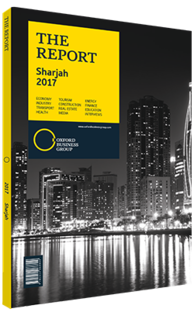Khalifa Mohammed Al Kindi, Chairman, Central Bank of the UAE: Interview

Interview: Khalifa Mohammed Al Kindi
How does the dirham’s fixed peg to the US dollar affect UAE monetary policy?
KHALIFA MOHAMMED AL KINDI: The recent wave of dollar appreciation – which is likely to continue with the direction of monetary policy in the US – has forced an appreciation trend of the dirham relative to major trading partners. This has been beneficial in stemming inflationary pressures by reducing the cost of imported goods for consumption and production. In this regard, our UAE economy has shown price flexibility and the capacity to maintain external competitiveness, notwithstanding commitments to the exchange rate peg.
However, the dirham-to-dollar peg puts a limit on monetary policy instruments in the UAE. Certificates of deposit, which the Central Bank of the UAE issues to banks operating in the country, are the monetary policy instrument through which changes in interest rates in the US transmit to the UAE banking system. With the restrictions on monetary policy, the central bank keeps working on mobilising other tools, independent of the monetary policy cycle in the US, and has aimed to increase its capacity to manage liquidity.
Work is also currently under way to enhance our capacity to activate macro-prudential policies that increase the scope for independent monetary policy by targeting credit growth in line with objectives for non-energy growth. This will ensure efficient intermediation while safeguarding financial stability.
The Research and Statistics Department is in the process of formalising scenarios to provide projections under the baseline scenario and possible shocks that could affect the macro-economy and financial stability in the near term. Managing these macro-prudential tools requires continuous monitoring of liquidity conditions and credit growth, with the goal of striking the necessary balance between intermediation in support of economic activity and financial stability. Based on credible scenarios, we aim to provide contingency plans in which we will activate the necessary macro-prudential tools at our disposal. These will maintain our goals and stem the risks of large shocks that could prove to be more costly in the absence of timely early intervention.
What do you see as the greatest risks to credit quality going forward?
AL KINDI: We realise that the major risk to credit is external and relates to global economic growth, particularly sustained low oil prices, low growth in the global economy and for major trading partners, and geopolitical tensions in the region. The UAE is an open economy and external shocks can have a spillover effect into domestic economic activity, which is likely to affect credit quality.
We are also cognisant of the impact on credit in the event that the US continues with its plan of further interest rate hikes in the future with a view to normalising its monetary policy.
However, because of a predominantly deposit-funding structure, ample liquidity in the banking system and the capacity at the central bank to support liquidity, the channels through which normalisation of US monetary policy could adversely affect the funding profile of UAE banks are rather limited. In addition, activating macro-prudential policies, as mentioned before, would increase our capacity to mitigate the risks of spillovers to the banking sector and the domestic economy.
The other external risk we see is the potential loss of non-resident deposits, although these deposits have been rising recently as a testament to the confidence regarding the stability of our banking sector. However, due to the heavy reliance on local versus foreign funds – non-resident funding remains between 10% and 12% of total deposits – we expect the impact of any losses on the stability of the banking system to remain rather limited, and we continue to monitor these funding flows to ensure stability.
You have reached the limit of premium articles you can view for free.
Choose from the options below to purchase print or digital editions of our Reports. You can also purchase a website subscription giving you unlimited access to all of our Reports online for 12 months.
If you have already purchased this Report or have a website subscription, please login to continue.

